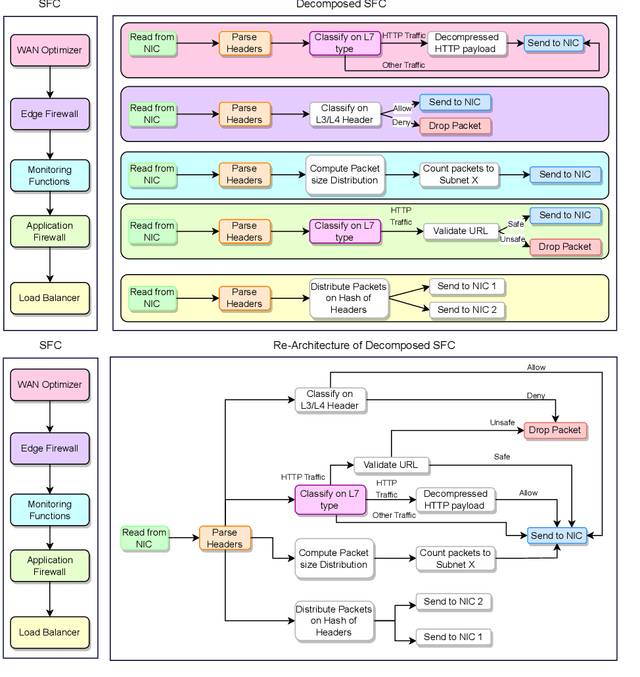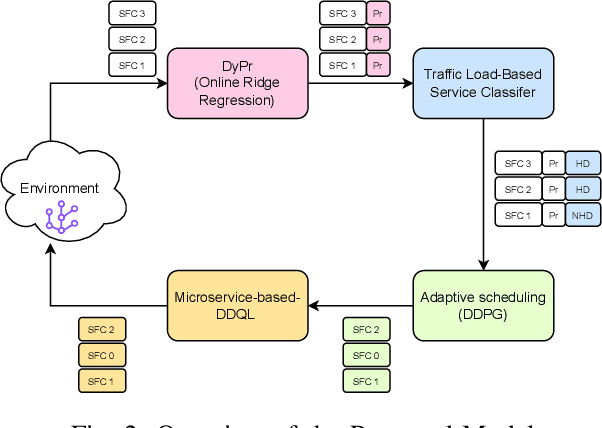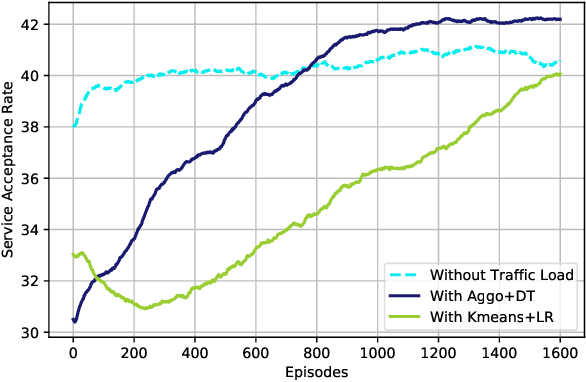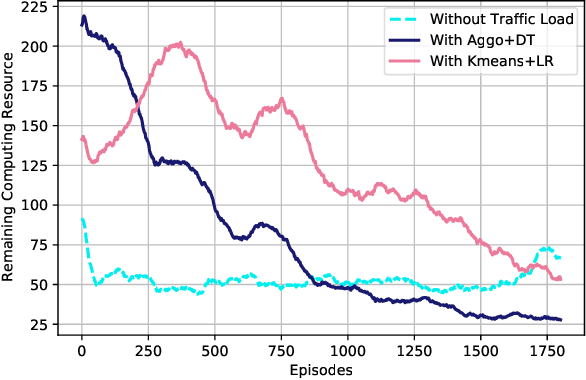Qiao Wang
School of Software, Tsinghua University
GeoTexBuild: 3D Building Model Generation from Map Footprints
Apr 11, 2025Abstract:We introduce GeoTexBuild, a modular generative framework for creating 3D building models from map footprints. The proposed framework employs a three-stage process comprising height map generation, geometry reconstruction, and appearance stylization, culminating in building models with intricate geometry and appearance attributes. By integrating customized ControlNet and Text2Mesh models, we explore effective methods for controlling both geometric and visual attributes during the generation process. By this, we eliminate the problem of structural variations behind a single facade photo of the existing 3D generation techniques. Experimental results at each stage validate the capability of GeoTexBuild to generate detailed and accurate building models from footprints derived from site planning or map designs. Our framework significantly reduces manual labor in modeling buildings and can offer inspiration for designers.
Diffusion-Guided Gaussian Splatting for Large-Scale Unconstrained 3D Reconstruction and Novel View Synthesis
Apr 02, 2025Abstract:Recent advancements in 3D Gaussian Splatting (3DGS) and Neural Radiance Fields (NeRF) have achieved impressive results in real-time 3D reconstruction and novel view synthesis. However, these methods struggle in large-scale, unconstrained environments where sparse and uneven input coverage, transient occlusions, appearance variability, and inconsistent camera settings lead to degraded quality. We propose GS-Diff, a novel 3DGS framework guided by a multi-view diffusion model to address these limitations. By generating pseudo-observations conditioned on multi-view inputs, our method transforms under-constrained 3D reconstruction problems into well-posed ones, enabling robust optimization even with sparse data. GS-Diff further integrates several enhancements, including appearance embedding, monocular depth priors, dynamic object modeling, anisotropy regularization, and advanced rasterization techniques, to tackle geometric and photometric challenges in real-world settings. Experiments on four benchmarks demonstrate that GS-Diff consistently outperforms state-of-the-art baselines by significant margins.
Optimized Resource Allocation for Cloud-Native 6G Networks: Zero-Touch ML Models in Microservices-based VNF Deployments
Oct 09, 2024



Abstract:6G, the next generation of mobile networks, is set to offer even higher data rates, ultra-reliability, and lower latency than 5G. New 6G services will increase the load and dynamism of the network. Network Function Virtualization (NFV) aids with this increased load and dynamism by eliminating hardware dependency. It aims to boost the flexibility and scalability of network deployment services by separating network functions from their specific proprietary forms so that they can run as virtual network functions (VNFs) on commodity hardware. It is essential to design an NFV orchestration and management framework to support these services. However, deploying bulky monolithic VNFs on the network is difficult, especially when underlying resources are scarce, resulting in ineffective resource management. To address this, microservices-based NFV approaches are proposed. In this approach, monolithic VNFs are decomposed into micro VNFs, increasing the likelihood of their successful placement and resulting in more efficient resource management. This article discusses the proposed framework for resource allocation for microservices-based services to provide end-to-end Quality of Service (QoS) using the Double Deep Q Learning (DDQL) approach. Furthermore, to enhance this resource allocation approach, we discussed and addressed two crucial sub-problems: the need for a dynamic priority technique and the presence of the low-priority starvation problem. Using the Deep Deterministic Policy Gradient (DDPG) model, an Adaptive Scheduling model is developed that effectively mitigates the starvation problem. Additionally, the impact of incorporating traffic load considerations into deployment and scheduling is thoroughly investigated.
KAN versus MLP on Irregular or Noisy Functions
Aug 15, 2024



Abstract:In this paper, we compare the performance of Kolmogorov-Arnold Networks (KAN) and Multi-Layer Perceptron (MLP) networks on irregular or noisy functions. We control the number of parameters and the size of the training samples to ensure a fair comparison. For clarity, we categorize the functions into six types: regular functions, continuous functions with local non-differentiable points, functions with jump discontinuities, functions with singularities, functions with coherent oscillations, and noisy functions. Our experimental results indicate that KAN does not always perform best. For some types of functions, MLP outperforms or performs comparably to KAN. Furthermore, increasing the size of training samples can improve performance to some extent. When noise is added to functions, the irregular features are often obscured by the noise, making it challenging for both MLP and KAN to extract these features effectively. We hope these experiments provide valuable insights for future neural network research and encourage further investigations to overcome these challenges.
An Evaluation of Standard Statistical Models and LLMs on Time Series Forecasting
Aug 09, 2024Abstract:This research examines the use of Large Language Models (LLMs) in predicting time series, with a specific focus on the LLMTIME model. Despite the established effectiveness of LLMs in tasks such as text generation, language translation, and sentiment analysis, this study highlights the key challenges that large language models encounter in the context of time series prediction. We assess the performance of LLMTIME across multiple datasets and introduce classical almost periodic functions as time series to gauge its effectiveness. The empirical results indicate that while large language models can perform well in zero-shot forecasting for certain datasets, their predictive accuracy diminishes notably when confronted with diverse time series data and traditional signals. The primary finding of this study is that the predictive capacity of LLMTIME, similar to other LLMs, significantly deteriorates when dealing with time series data that contain both periodic and trend components, as well as when the signal comprises complex frequency components.
Enhancement of 3D Gaussian Splatting using Raw Mesh for Photorealistic Recreation of Architectures
Jul 22, 2024Abstract:The photorealistic reconstruction and rendering of architectural scenes have extensive applications in industries such as film, games, and transportation. It also plays an important role in urban planning, architectural design, and the city's promotion, especially in protecting historical and cultural relics. The 3D Gaussian Splatting, due to better performance over NeRF, has become a mainstream technology in 3D reconstruction. Its only input is a set of images but it relies heavily on geometric parameters computed by the SfM process. At the same time, there is an existing abundance of raw 3D models, that could inform the structural perception of certain buildings but cannot be applied. In this paper, we propose a straightforward method to harness these raw 3D models to guide 3D Gaussians in capturing the basic shape of the building and improve the visual quality of textures and details when photos are captured non-systematically. This exploration opens up new possibilities for improving the effectiveness of 3D reconstruction techniques in the field of architectural design.
Reduced Effectiveness of Kolmogorov-Arnold Networks on Functions with Noise
Jul 20, 2024



Abstract:It has been observed that even a small amount of noise introduced into the dataset can significantly degrade the performance of KAN. In this brief note, we aim to quantitatively evaluate the performance when noise is added to the dataset. We propose an oversampling technique combined with denoising to alleviate the impact of noise. Specifically, we employ kernel filtering based on diffusion maps for pre-filtering the noisy data for training KAN network. Our experiments show that while adding i.i.d. noise with any fixed SNR, when we increase the amount of training data by a factor of $r$, the test-loss (RMSE) of KANs will exhibit a performance trend like $\text{test-loss} \sim \mathcal{O}(r^{-\frac{1}{2}})$ as $r\to +\infty$. We conclude that applying both oversampling and filtering strategies can reduce the detrimental effects of noise. Nevertheless, determining the optimal variance for the kernel filtering process is challenging, and enhancing the volume of training data substantially increases the associated costs, because the training dataset needs to be expanded multiple times in comparison to the initial clean data. As a result, the noise present in the data ultimately diminishes the effectiveness of Kolmogorov-Arnold networks.
Enhancing Energy Efficiency in O-RAN Through Intelligent xApps Deployment
May 16, 2024



Abstract:The proliferation of 5G technology presents an unprecedented challenge in managing the energy consumption of densely deployed network infrastructures, particularly Base Stations (BSs), which account for the majority of power usage in mobile networks. The O-RAN architecture, with its emphasis on open and intelligent design, offers a promising framework to address the Energy Efficiency (EE) demands of modern telecommunication systems. This paper introduces two xApps designed for the O-RAN architecture to optimize power savings without compromising the Quality of Service (QoS). Utilizing a commercial RAN Intelligent Controller (RIC) simulator, we demonstrate the effectiveness of our proposed xApps through extensive simulations that reflect real-world operational conditions. Our results show a significant reduction in power consumption, achieving up to 50% power savings with a minimal number of User Equipments (UEs), by intelligently managing the operational state of Radio Cards (RCs), particularly through switching between active and sleep modes based on network resource block usage conditions.
Automated Generation of Multiple-Choice Cloze Questions for Assessing English Vocabulary Using GPT-turbo 3.5
Mar 04, 2024Abstract:A common way of assessing language learners' mastery of vocabulary is via multiple-choice cloze (i.e., fill-in-the-blank) questions. But the creation of test items can be laborious for individual teachers or in large-scale language programs. In this paper, we evaluate a new method for automatically generating these types of questions using large language models (LLM). The VocaTT (vocabulary teaching and training) engine is written in Python and comprises three basic steps: pre-processing target word lists, generating sentences and candidate word options using GPT, and finally selecting suitable word options. To test the efficiency of this system, 60 questions were generated targeting academic words. The generated items were reviewed by expert reviewers who judged the well-formedness of the sentences and word options, adding comments to items judged not well-formed. Results showed a 75% rate of well-formedness for sentences and 66.85% rate for suitable word options. This is a marked improvement over the generator used earlier in our research which did not take advantage of GPT's capabilities. Post-hoc qualitative analysis reveals several points for improvement in future work including cross-referencing part-of-speech tagging, better sentence validation, and improving GPT prompts.
Assessing the Efficacy of Grammar Error Correction: A Human Evaluation Approach in the Japanese Context
Feb 29, 2024Abstract:In this study, we evaluated the performance of the state-of-the-art sequence tagging grammar error detection and correction model (SeqTagger) using Japanese university students' writing samples. With an automatic annotation toolkit, ERRANT, we first evaluated SeqTagger's performance on error correction with human expert correction as the benchmark. Then a human-annotated approach was adopted to evaluate Seqtagger's performance in error detection using a subset of the writing dataset. Results indicated a precision of 63.66% and a recall of 20.19% for error correction in the full dataset. For the subset, after manual exclusion of irrelevant errors such as semantic and mechanical ones, the model shows an adjusted precision of 97.98% and an adjusted recall of 42.98% for error detection, indicating the model's high accuracy but also its conservativeness. Thematic analysis on errors undetected by the model revealed that determiners and articles, especially the latter, were predominant. Specifically, in terms of context-independent errors, the model occasionally overlooked basic ones and faced challenges with overly erroneous or complex structures. Meanwhile, context-dependent errors, notably those related to tense and noun number, as well as those possibly influenced by the students' first language (L1), remained particularly challenging.
 Add to Chrome
Add to Chrome Add to Firefox
Add to Firefox Add to Edge
Add to Edge